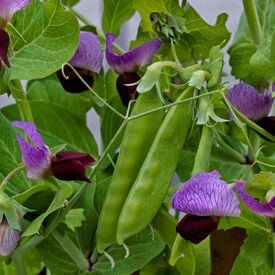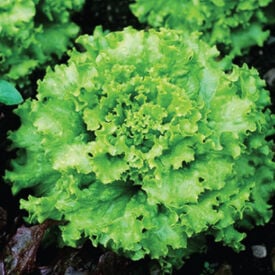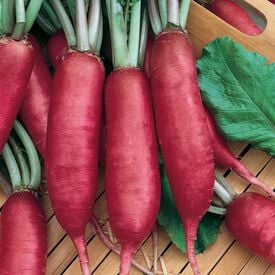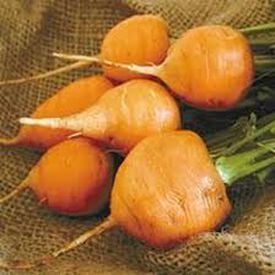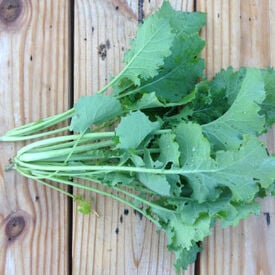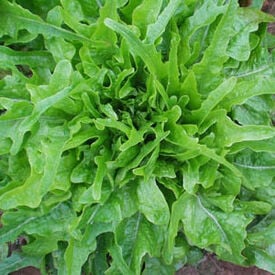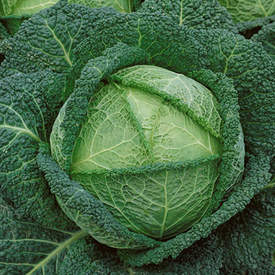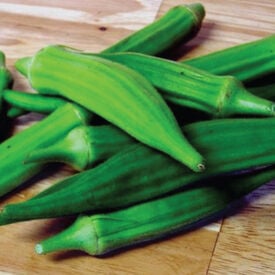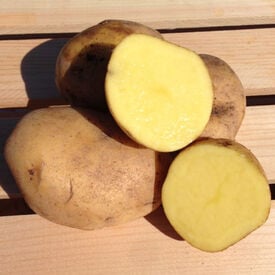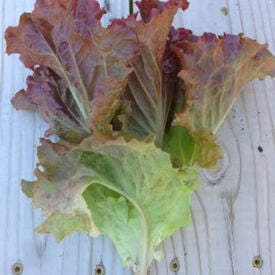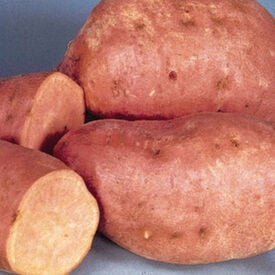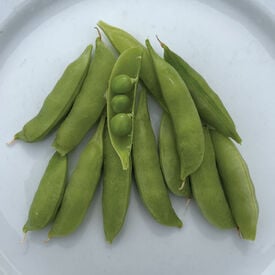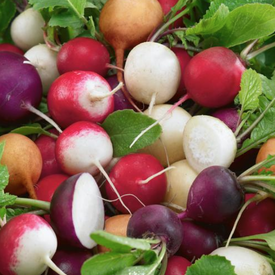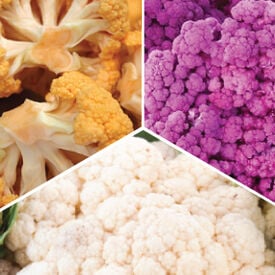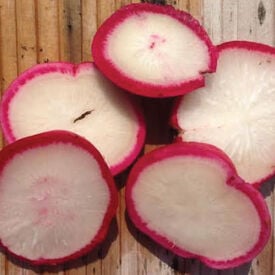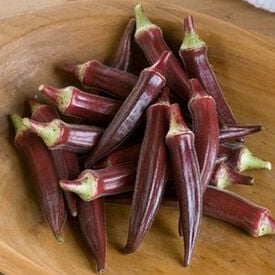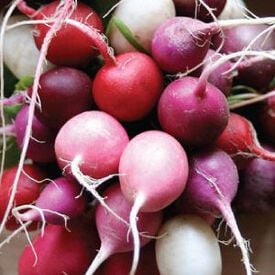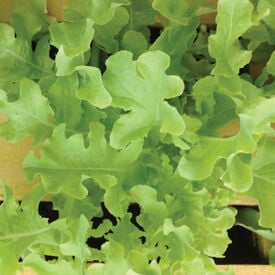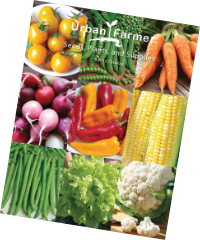Little SnowPea Purple produces dwarf-sized vines with beautiful purple flowers. This pea plant is tiny yet productive and does well in small gardens or containers. The pods mature early and have a crunchy bite. Plants will reach a maximum height of 24 inches. For pea shoots, matures in 10 days. Expect slender, tight greens with minimal side branching, upright habit, and ease of harvest and stack.
Grand Rapid TBR lettuce is a versatile variety derived from the classic Grand Rapid lettuce, known for its resistance to diseases like downy mildew. Originating in the early 20th century, this loose-leaf type features frilled, light green leaves that form a rosette, offering both beauty and texture. The flavor is crisp and mild, making it a delightful addition to salads and sandwiches. Harvesting can begin around 45 days after planting, with the option to pick individual leaves for a continuous supply or to cut the entire head when fully mature. Grand Rapid TBR lettuce thrives in cooler climates and prefers well-drained soil, making it an excellent choice for both spring and fall gardens, particularly for home gardeners seeking a reliable and flavorful crop.
The Pink Summercicle Radish will bring you an endless summer with its bright pink color, sweet taste and popsicle-like shape! These 5-6 inches long roots have a crisp white inside with an extra sweet flavor. This very adaptable variety is best when grown in the early spring or fall. Enjoy the Pink Summercicle in salads or stir-fries!
Thumbelina carrots are tender and sweet with no need to peel! It is the perfect bit size for fresh eating, stews and salads. Thumbelina's small size makes it a great choice for heavy or shallow soils or containers. No wonder it is an All-America Selections Winner from 1992!
The Dwarf Siberian Kale leaves are perfect as a garnish and in hearty winter dishes. This frilly green and purple kale dances in the crisp early morning cold and thrive. Why? Because its roots are from Russia!
The Royal Oakleaf is a long standing oak leaf lettuce that has good heat resistance. This variety develops beautiful rosettes of deeply lobed sea green leaves. Royal Oakleaf is an improved version of the standard oak leaf lettuce. The Royal Oakleaf has excellent flavor, crispness and tenderness that is one that cannot be beat!
Dark green crumpled leaves, approximate 7 x 9 in. head, 6-8 lb, even better flavor after touched by frost, very tender.
The Emerald Okra is a beautifully bright early maturing okra variety! This okra is an old heirloom variety from the 1950's that was first developed by the Campbell's Soup Company. This variety produces straight okra that keeps its vibrant green color even after being cooked. Emerald Okra is best harvested between 3-4" for the most tender and tasty pods.
SPRING SHIPPING - Certified - To say that the German Butterball Potato is excellent, is an insult! After just one bite of this mouth watering creamy yellow fleshed potato, you'll know why it won first place in Rodale' Gardening "Taste Off." The German Butterball was introduced by David Ronniger in 1988 from a handful of potatoes which he then increased.
The Ruby Red Lettuce is an early variety that produces good yields of bright green to ruby red colored leaves. This beautiful variety is a very heat tolerant lettuce that is slow to bolt. Ruby Red's color does not fade in the hot weather! This lettuce is excellent for adding color to salads or garnishes.
Certified - The Centennial Sweet Potato is probably the most widely known variety recognized in America! This variety has a carrot-like color on the inside with a copper to orange outside skin. Centennial is nicknamed "Baby Bakers" and is ready in about 90 days. The delicious Centennial has been used in many bake-off contests and is a favorite for making sweet potato fries!
Sugar Sprint Pea will sprint into the production of delicious peas! This fast maturing, heavy producing pea plant is one of the earliest maturing peas available. This pea variety produces 3" stringless snap peas over a long period. Sugar Sprint is heat tolerant and resistant to powdery mildew.
The Fiesta Blend is a five color radish blend of red, pink, yellow, white and purple! This colorful blend will be sure to a pop of fun color to any garden. Serving up the Fiesta Blend in salads or dishes is a great addition to any party or gathering!
The Colorful Mix is a fun blend of different colorful cauliflower varieties. Have fun with this colorful mix of cauliflower varieties. This is a great mix to plant and sale at farmers markets. People will marvel at the bright colors! The varieties include Cheddar, Graffiti, and Snowball.
The Early Scarlet Globe is an early forcing radish that is perfect for home and market growers! This variety is a great bunching radish that produces 1" globes with bright red skin and a white flesh. The Early Scarlet Globe is great for both spring and fall planting!
The Red Burgundy Okra is a deep red variety that produces a tender and delicious pod. This productive burgundy red okra adds a nice crunch, delicious flavor and beautiful color to any soup or stew, especially gumbo!
Nothing says "spring" like the crisp taste of a homegrown Easter Egg Radish! This variety is a bright color blend of red, white, rose pink, purple, and bi-color (red top, white bottom) that is perfect for salads and relish trays. At the harvest time, you can have your own "Easter Egg hunt" for the most colorful radish! After the harvest, you can eat them fresh in salads or slice and add them to sandwiches for a bit of crunch and color.
The Green Salad Bowl is a decorative rosette type of lettuce with closely set crispy leaves. This looseleaf lettuce's crumpled leaves hold water very well, making it a popular variety!
